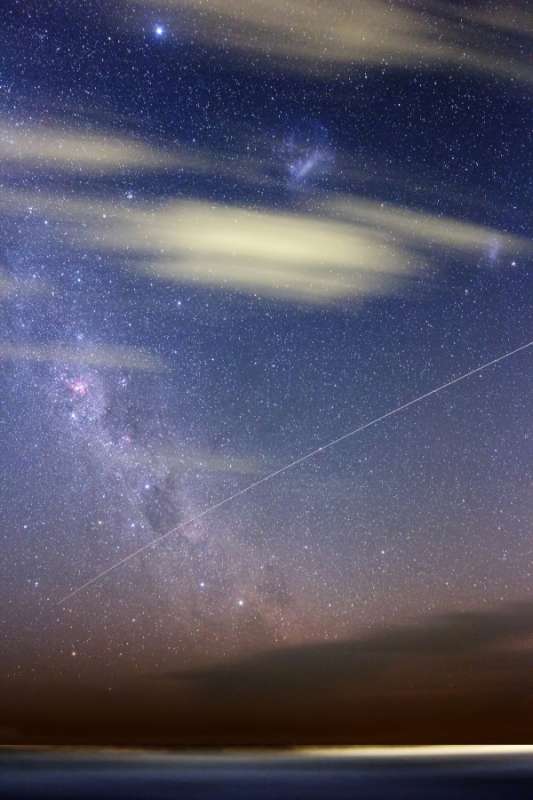
|
Credit & Copyright: Luis Argerich
Explanation:
Clouds on
a summer night
frame this sea and skyscape, recorded earlier
this month near Buenos Aires, Argentina.
But planet Earth's
clouds are not the only clouds on the scene.
Starry clouds and nebulae along the southern hemisphere's summer
Milky Way arc above the horizon, including
the dark Coal Sack
near the Southern Cross and the
tantalizing pinkish glow of the Carina Nebula.
Both the Large (top center) and Small Magellanic Clouds
are also in view, small galaxies in their own right and
satellites
of the Milky Way
up to 200,000 light-years distant.
Alpha star of the Carina constellation and second
brightest star in Earth's night,
Canopus
shines above about 300 light-years away.
Still glinting
in sunlight at an altitude of 400 kilometers,
the orbiting International Space Station traces a
long
streak through the single, 5 minute, star-tracking exposure.
|
January February March April May June July August September October November December |
| ||||||||||||||||||||||||||||||||||||||||||||||||
NASA Web Site Statements, Warnings, and Disclaimers
NASA Official: Jay Norris. Specific rights apply.
A service of: LHEA at NASA / GSFC
& Michigan Tech. U.
Based on Astronomy Picture
Of the Day
Publications with keywords: ISS - Milky Way
Publications with words: ISS - Milky Way
See also:
- The ISS Meets Venus
- Galaxies in Space
- APOD: 2025 February 9 Á Milky Way over the Australian Pinnacles
- APOD: 2025 January 5 Á Rocket Launch as Seen from the International Space Station
- APOD: 2024 November 24 Á Journey to the Center of the Galaxy
- APOD: 2024 November 5 Á Milky Way over Easter Island
- APOD: 2024 August 4 Á Gaia: Here Comes the Sun
